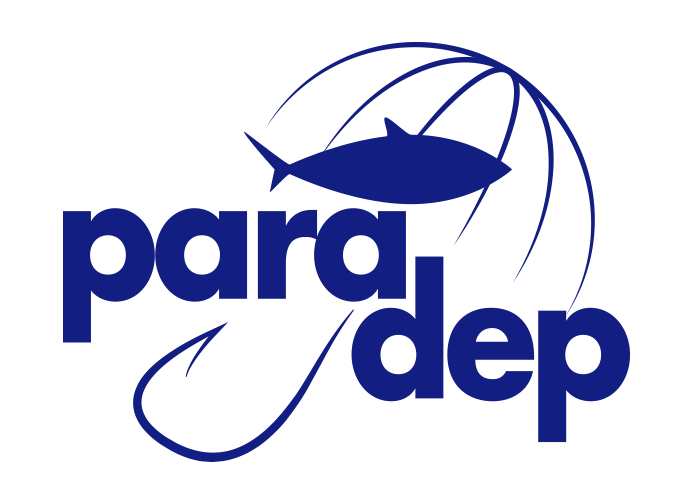Depredation is defined as the damage or removal of fish from fishing gear by predators and raises concerns about the conservation of marine protected species involved, fisheries yield and profitability, and stock assessment of target species. There is an obvious lack of knowledge about depredation impacting pelagic longline fisheries, especially in the southwest Indian Ocean. Thus, there is a real need for the development of accurate indicators to assess its impact in a given fishery. In Reunion Island, local pelagic longliners targeting swordfish (Xiphias gladius) and tuna (Thunnus spp.) are affected by short-finned pilot whale (Globicephala macrorhynchus), false killer whale (Pseudorca crassidens) and pelagic shark depredation. Catch and depreda- tion data collected during self-reporting, commercial and experimental cruises between 2007 and 2015 were used to compute depredation indicators such as the depredation occurrence (Interaction Rate), the proportion of fish depredated among the overall catch (Gross Depredation Rate), the average proportion of fish depredated per depredated set (Damage Rate) and the number of fish depredated per 1000 hooks (Depredation Per Unit Effort). Here we show that shark depredation impacted more fishing sets (IRs=31%) than toothed whale depredation (IRc=14%), but when depredation occurred, toothed whale depredation impact was higher: the number of fish damaged per 1000 hooks and the average proportion of fish damaged per set were greater for toothed whale depredated sets (DPUEc*=2.7 fish and DRc*=16.8%) than for shark depredated ones (DPUEs*=1.2 fish and DRs*=6.4%). Since 2011, when the pelagic fleet concentrated its fishing effort around the Reunion EEZ and the east coast of Madagascar, the gross depredation rate increased and ranged from 4 to 6.3%. In areas of high toothed whale depredation rates, the amount of fish lost per fishing operation was high (DPUEc*=3.2 fish/1000 hooks, DRc*=18%). In areas of low toothed whale depredation rates, the amount of fish lost per fishing operation was low (DPUEc*=1.8 fish/1000 hooks, DRc*=4.6%). Shark depredation has low impact on commercial CPUE. However, one should keep in mind that these are minimum depredation estimates, since several uncertainties could not be taken into account: total depredation leaving no trace on the hook, bait depredation by small delphinids indirectly leading to catch loss, toothed whale presence scaring fish away or additional running costs when leaving a fishing area to avoid predators. Thus, combined with marginal profits, increased running costs and low fish prices, toothed whale depredation has disastrous effects on Reunion pelagic longline fishery.
Depredation belongs to negative interactions between large marine megafauna and fisheries and is defined as the damage or removal of fish or bait from the fishing gear by predators, such as toothed whales, sharks, birds or squids. Those interactions lead to several negative impacts affecting the species involved (bycatch, shift in their feeding habits and hunting strategies), fishermen (financial loss induced by fish damage and search for new fishing areas) and stock assessment aspects (underestimation of catch report). Nevertheless, this issue remains poorly studied in the frame of pelagic longline fisheries, and especially in the Indian Ocean.
This work aimed at studying short-finned pilot whale (Globicephala macrorhynchus), false killer whale (Pseudorca crassidens) and pelagic shark depredation impacting pelagic longline fleets operating in the southwest Indian Ocean. Analyzed data were collected during scientific and commercial fishing trips from 2002 and 2010 in the southwestern Indian Ocean. First, an analysis of shark and toothed whale depredation was implemented and logistic regression models were used to identify potential correlates between depredation occurrence and covariates characterizing fishing practices and environmental factors. Shark depredation events were more frequent but toothed whales damaged more fish on the fishing gear. 19.5% of the catch was lost to depredation in the Seychelles archipelago, and this area is considered as a depredation “hot-spot”. Those interactions highlight a spatiotemporal synchrony between fishing activities and predators’ abundance, in particular toothed whales.
Because of the aforementioned consequences, several depredation mitigation measures have been tested so far but their long-term efficiency are still to be proved. Innovative devices based on fishing gear modifications and aiming at protecting capture were designed and tested. Three fishing trips were conducted in Seychelles and Reunion Island to assess the efficiency of “spiders”, “socks” and “DESAP” (DEpredation mitigation device by Scaring predators And Protecting capture) towards toothed whale depredation. Preliminary results underlined operational constraints to routinely deploy those devices during fishing operations. Nevertheless, the promising results obtained during the field tests gave us valuable insights to go further for the development of a new prototype, our approach being fully consistent with the ecosystem approach to fisheries.
Our depredation data were also used to give new insights in false killer whale and shortfinned pilot whale ecology. Predator-prey-scavenger models developed in terrestrial environment were used to implement a similar model aiming at indirectly assessing the relative abundance of toothed whales involved in depredation events. Odontocetes groups involved in depredation are presumably some stable hunting groups, a small sub-unit of false killer whale and short-finned pilot whale social structure. Greater group sizes were found in Seychelles and near the shelfbreak, underlining the attractiveness of those biologically richest areas.
This work highlighted a poorly studied issue and is paramount for the development of depredation mitigation measures. This crucial aim supports a sustainable approach to environmentally responsible fishing, where short-term economic goals meet conservation concerns.


